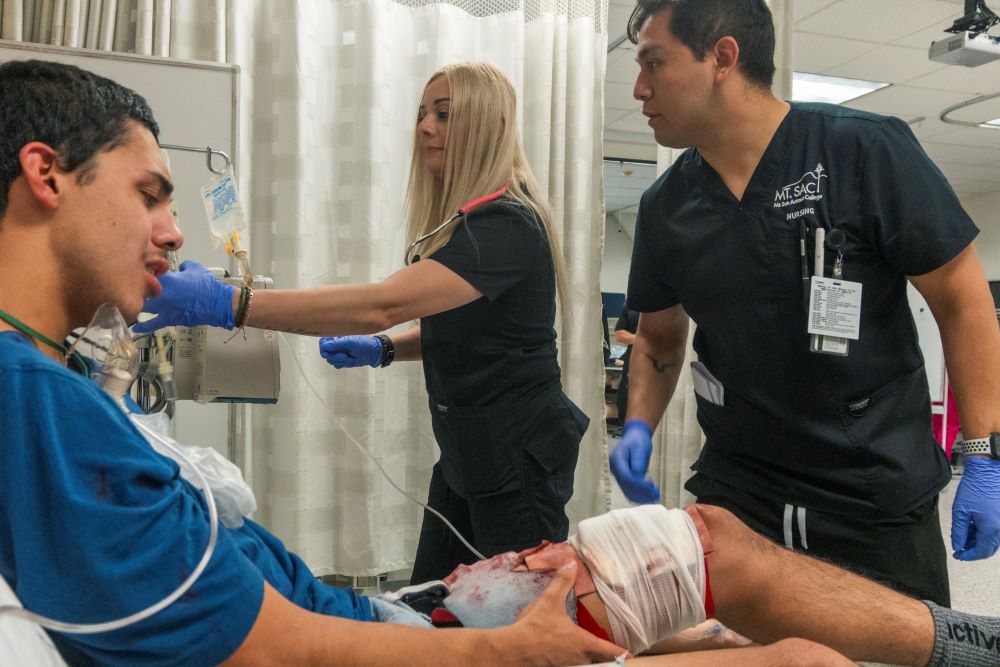Mt. SAC, APU Create Nursing Pathway

September 04, 2025 - 01:48 PM
Mt. San Antonio College and Azusa Pacific University announce a new partnership between the two institutions, extending access to nursing education for residents of the region while offering a quicker and more affordable pathway for students to earn their Bachelor of Science in Nursing (BSN) degree. A special signing will be hosted on Sept. 18 to mark this important connection. The schools hope to welcome the first cohort in spring 2026.
This collaboration enables nursing students to concurrently enroll at APU and Mt. SAC, earning credits and clinical experience through both institutions. In just six semesters of total program study, Mt. SAC’s Associate’s Degree in Nursing (ADN) students will graduate from APU with their BSN. This dual preparation improves graduates’ employability, since California healthcare organizations highly prefer to hire BSN-prepared graduates.
“We are honored to partner with Azusa Pacific University in this initiative,” said Mt. SAC President and CEO Dr. Martha Garcia. “By working together, we have created a seamless process for students to first earn their associate’s degree through our nationally ranked program, and then take the next step and earn a bachelor’s degree through APU’s excellent program. Our students will be well prepared to enter a surging job market and to lead the next generation of nursing professionals.”
The accelerated program elevates the proficiency of nurses entering Southern California hospitals and clinics, moving such graduates beyond the two-year associate’s degree while increasing their skills as caregivers. In combining the low-cost, open-access program at Mt. SAC with APU’s nationally ranked School of Nursing, students from all educational backgrounds will enter a pathway to a high-paying, impactful career.
“This agreement provides students with more suitable and more affordable options to obtain a Bachelor of Science in Nursing,” said Lance Heard, dean of Mt. SAC’s Technology and Health Division. “Both the integrated and bridge options offer students a seamless way to transfer from one top nursing school to another.”
Students entering the Mt. SAC/APU program will have completed prerequisite courses required for admission to the Mt. SAC nursing program. Upon acceptance to the Mt. SAC/APU program, the student concurrently enrolls in classes at Mt. SAC and at APU, receiving complete student status at both institutions.
The two-year sequence covers 70 units at Mt. SAC in courses such as physiology, pharmacology, psychiatric, medical-surgical, obstetrics, and pediatrics, and 50 units at APU, including pathophysiology, research and statistics, ethics and spirituality, and evidence-based practice.
After the student’s fourth semester at Mt. SAC, students earn their associate’s degree in nursing and take the state licensure exam to become a registered nurse. Mt. SAC ‘s nursing program serves approximately 200 students each year and had a 96 percent pass rate on the 2023-24 state board nursing exam. After taking a final course in public health at APU, they will earn their bachelor’s degree.
Baccalaureate-prepared nurses have been shown to improve patient outcomes and reduce hospital costs. Studies have shown that nurses with bachelor’s degrees score higher on measures of quality and safety, and earn more. At the same time, bachelor’s degrees can present financial challenges to students and their families. The National Education Progression in Nursing Collaborative challenged nursing educators to create a seamless model that allows ADN students to easily and quickly complete the BSN degree. This pathway will help address California’s need for 44,500 new nurses by 2030, according to RegisteredNursing.org.

